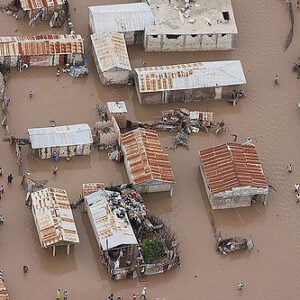The 2025 Atlantic hurricane season continues to pose a significant threat across the Americas, with Hurricane Melissa currently moving slowly toward Jamaica. Out of the 19 storms forecast for this year, 13 have already formed, including four hurricanes and three that reached major hurricane status. These extreme weather events raise urgent questions about how storms and hurricanes form, how they are named and predicted, and how individuals and communities can best prepare for them.
Tropical storms and hurricanes belong to the same system known as tropical cyclones, which are low-pressure systems that rotate counterclockwise in the northern hemisphere. The key difference lies in their intensity: tropical storms have wind speeds between 63 and 118 km/h, while hurricanes exceed 119 km/h. They are known as cyclones in Southeast Asia, typhoons in the Pacific, and hurricanes in the Atlantic and Caribbean. Even without reaching hurricane strength, storms can cause devastating impacts, particularly in vulnerable regions affected by poverty, climate change, and previous disasters. In 2024, storms were the second most frequent type of disaster globally, affecting nearly 30 million people.
Storms and hurricanes form over warm ocean waters with temperatures above 26°C. As warm, moist air rises, it releases heat and strengthens the system, creating the hurricane’s eye and eyewall—the most intense part of the storm. Once a hurricane moves over land, it begins to weaken as it loses access to the ocean’s heat. However, due to climate change, rapid intensification—where wind speeds increase drastically within 24 hours—has become more frequent, leaving communities with little time to prepare.
Hurricanes are given names to simplify communication and prevent confusion when multiple storms occur simultaneously. The World Meteorological Organization maintains six rotating lists of names, alternating between male and female names. If a hurricane causes severe destruction, its name is permanently retired. The naming process helps meteorologists, emergency services, and the public track and prepare for storms more efficiently.
Thanks to advancements in forecasting technology, meteorologists can now predict a hurricane’s path and intensity with greater precision. Slow-moving storms, like Hurricane Melissa, pose a higher risk since their prolonged winds and rain can lead to extended flooding and landslides. Early warning systems and pre-disaster actions—such as strategic placement of humanitarian aid and community evacuation drills—are essential to minimizing damage and loss of life.
Preparation before, during, and after a hurricane is crucial. Individuals should create evacuation plans, identify safe shelters, and secure their homes before hurricane season begins. During a hurricane, it is vital to stay indoors, follow official updates, and avoid windows and unstable structures. After the storm, people should avoid hazards such as downed power lines and contaminated water, assist neighbors, and remain alert for secondary threats like flooding. With proper preparedness and early action, communities can significantly reduce the devastating effects of hurricanes.







